Daisy hello@theorganicprepper.com
Recently, I went to the store to buy canning jars. Low and behold, ALL SOLD OUT. Why? it seems that there has been a warning of food shortages and many are getting ready, including those who have never canned. Governments are telling people to have 6 months to a year of food storage in their homes.
With climate change, many are forcasting a very dismal garden season for gardening. Periods of heat, cold rain, drought, massive storms and a lack of ferlizers. Soil is lacking nutrients for plants to grow. Also, many seeds are not germanating. There is a stampeade for seeds at garden centers, so get yours now. Our green house had seeds on display in November and the staff said they usually do not come in till February.
I was able to go on our local garage sales web and there are older grandma’s giving jars away. I have so fare gotten about 10 dozen along with lids and rings.
WITH THE COMING FOOD SHORTAGE, now is the time to gain full knowledge of growing a garden. We have started a pot garden in the house. Needed to get growing lamps. I have planted radishes, chives, kaile , spinach and lettuce. All are coming up very good. Although they need plenty of water.
Recently, we have been advised that there may be many problems in having a garden. These may include, weather, sun, soil conditions and seeds that will not germinate. What ever, it is recommended to start seedling in the house or green house. Suggestion are to plant in tubs, pails, and above ground boxes. Also, due to soil condition plenty of fertilizer many be required. One should check what is required by testing the soil. It is recommended that tomatoes be planted in 5-8 gallons buckets or pails. Drill hole in the containers, place a holding tray under the container and water in the tray so the roots will go for the water, do not water from the top.
8 Great Depression Era Recipes We Will Need Soon – Ask a Prepper
Gardening is Good For The Soul! Why We Love Plants So Much!
by Tess Pennington | June 2020 | Featured, Garden, Health | 0 comments
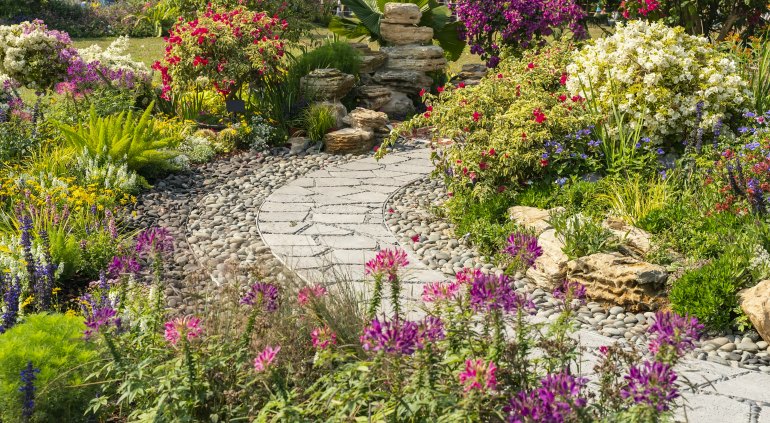
Gardening is good for you – not just your physical health, but your mental health too. There’s a reason, especially right now, that we love plants so much. If you have a connection to nature, now is the time to cultivate your green thumb.
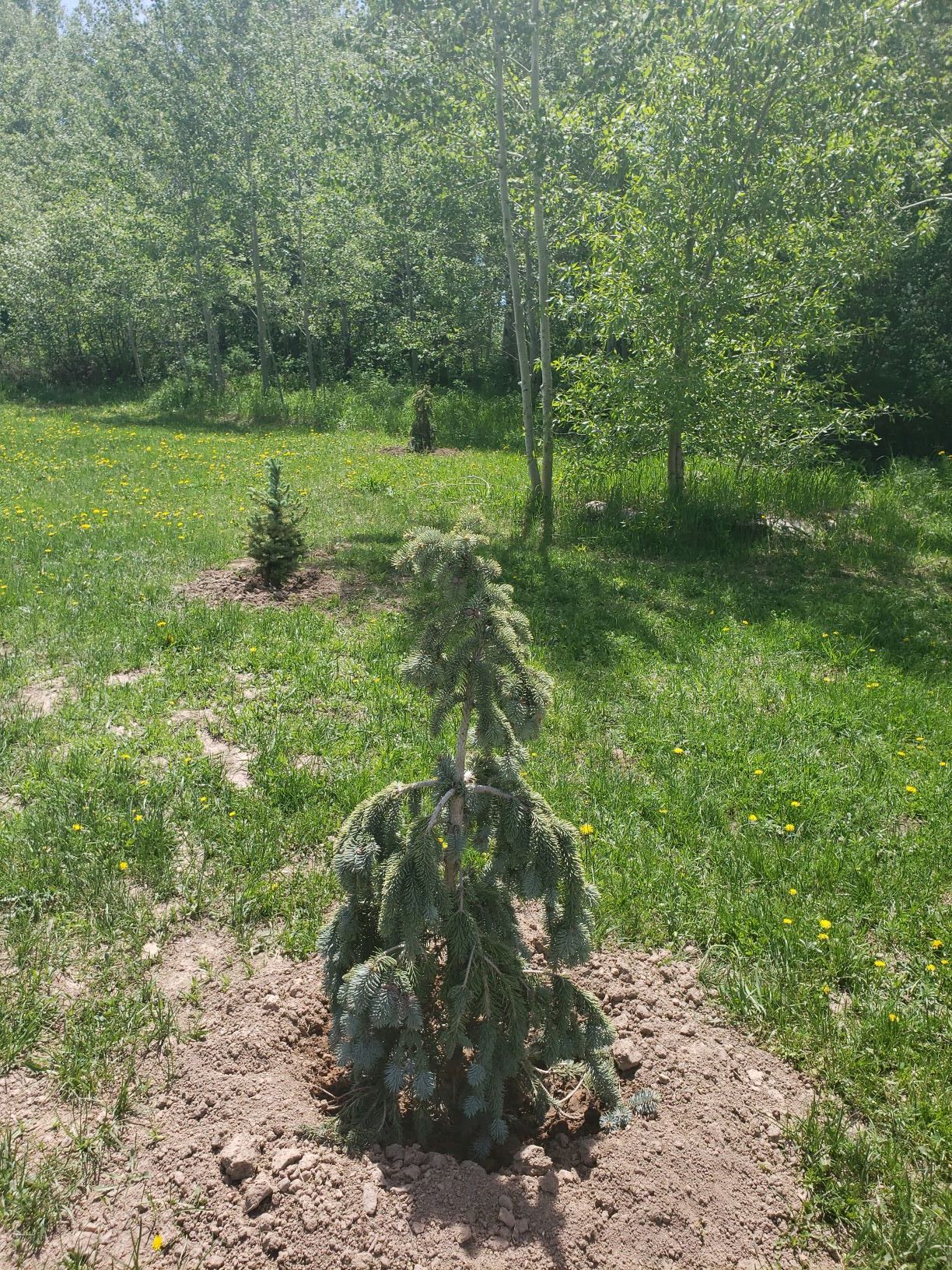
While I was at a nursery grabbing a few small perennial herbs to plant near the greenhouse, because you really can’t have too many herbs, I noticed a tree. I’d never seen such a tree before but I had also never felt a connection to a plant like I did with that tree before either. It was a weeping blue spruce. Something about that tree kept calling to me and I spent two days talking about it to my husband until he said “you know what? I can tell you love that tree. Just go get it.” So I did. I felt right. It felt like this tree belonged with me. I thought I was the only one until I took my daughter to a hair appointment in town.
My friend, who owns the salon I take the kids to, said she’s been unable to refrain from filling her home and yard with plants right now. Not just vegetables, but trees, and indoor plants, flowers, and succulents. I realized I had been like that too lately. Then when talking to my other friends, they were saying things like “I have no idea why I’m buying all these plants, but I just can’t get enough of them right now!” I had felt like this too! I want more plants. I want more trees. I knew there had to be a reason why some of us have been drawn to nature and certain plants right now, and there is! There’s a scientific reason why our souls have been craving gardening and plants at unexplainable levels.
How To Make Your Own Seed Bank
We are already turned to nature as human beings, but some have noticed the energy of plants has been something just short of magical lately. According to Yahoo, studies have shown caring for plants is a good form of therapy, as the act of tending to them relieves stress, has an overall calming effect, and takes our minds off the daily grind – or, the lack thereof for many on the planet. Plants are living beings that we can almost “feel” ourselves become attached to. Reading that kind of hit me, because I was definitely drawn to that beautiful weeping blue spruce. Now that it’s planted, I still can’t stop venturing outside to check on it and marvel at its beauty.
“Watching a plant grow and thrive under your care can help you feel satisfied with minimal effort. Plants improve the aesthetics of one’s surroundings and can help us remember that we are connected to, and part of, nature particularly if we live in urbanized city environments,” said Dr. Natasha Bijlani, a consultant psychiatrist at Priory Hospital Roehampton.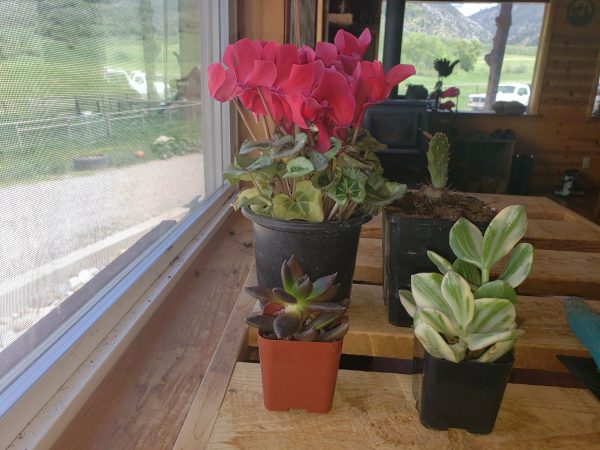
Some of the plants I have gotten this year. Persian cyclamen, and three succulents.
Not to mention, gardening and planting larger trees outside is good for physical health, as we get our bodies moving and enjoy time in the sun. Plus, if we weed and work on a garden that provides us delicious and nutritious vegetables and herbs we can reap the benefit of caring for those plants after we harvest them too.
Have You Ever Wondered Why Gardening Feels so Good?
During times of great amounts of stress like those times we are living through now, all situations are different. But there’s nothing a plant cannot help, even if minimally. There’s a lot of negativity in the world right now, and plants are a great way to take a break from technology that brings us that news on a constant IV drip of information. Now that so many are working from home, or unemployed, constantly checking work emails and scrolling through social media have become even more common. Even if it’s just for a few minutes a day, watering or planting forces you to focus on something that isn’t on a screen and won’t have us feeling bad about ourselves.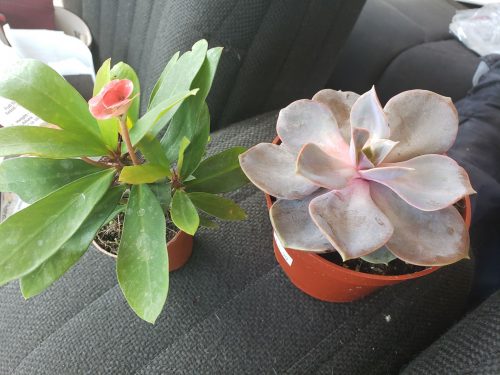
Two more succulents I picked up.
I’ve found that if you love a plant that you see and you have the means to purchase it, you should just do it! Nothing feels so strange as thinking about a tree all night instead of sleeping. I mean, it’s a tree. It shouldn’t matter that much, and yet there’s a psychological reason why we need to reconnect with nature, especially during such uncertain times. Even if you live in an apartment where buying a tree isn’t practical, consider indoor plants at the very least.
It may seem obvious, but indoor plants are hugely beneficial to our mental well being. One 2015 study found that a group of people in their 20s experienced a decrease in blood pressure and other symptoms of stress when they took part in indoor gardening sessions, compared to computer-related tasks. Indoor plants help to reduce “physiological and psychological stress”, the results suggested.
If you choose to grow indoor herbs, you can also learn to make your own soothing and calming teas fro them, getting even more benefits from the plants you love.
The desire to reconnect with nature is likely stemming from the crazy world we are all living in. Over 100 studies have shown that being in nature, living near nature, or even viewing nature in paintings and videos can have positive impacts on our brains, bodies, feelings, thought processes, and social interactions. In particular, viewing nature seems to be inherently rewarding, producing a cascade of position emotions and calming our nervous systems. These in turn help us to cultivate greater openness, creativity, connection, generosity, and resilience.
the bottom line, is that we need to reconnect with nature and distress. Now is the perfect time to do that and many have found themselves drawn to plants because of it. But don’t just stop with caring for your plants! Get in a better relationship with mother earth and try to become more sustainable. Take the time to really appreciate the beauty and abundance the Earth has given us. It really is a unique experience.
How To Double Your Harvest with a Late Summer Planting
by Tess Pennington | August 2018 | Featured, Garden | 0 comments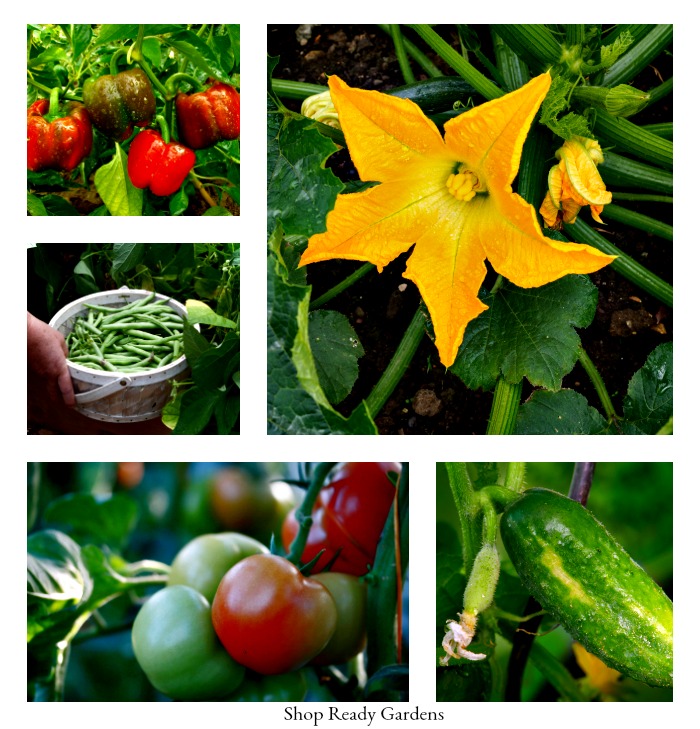
SPECIAL OFFER: Start your second summer harvest with these customer favorites
How’s your summer garden growing? Now that there is plenty of sun and warmth, our garden is starting to produce juicy harvests. While we are enjoying the fruits of our labor, starting a second summer garden late in the summer can give you double the harvest!
Over the years, I have learned to bunch in as many vegetables as I can for a second planting. For example, squashes take up a lot of space when they start growing. We grow our zucchini and squash in raised garden beds using the Square Foot Gardening Method and in between those plants, we grow lower growing, shade plants like lettuce and bunching onions. The large leaves of the zucchini plant will do double-duty by shading the delicate leaves of lettuces and onions and at the same time making use of the space we are using. Another way to make the most of your garden space is the Three Sisters Gardening method.
Our Favorites
To determine which plants you want to grow, think of the ones that will preserve well, are fast-growing, and prefer growing in warmer weather. Check your plant hardiness zone to determine if a starting a second crop will grow in your area. These are some of our favorites:
Tips for Growing a Late Harvest
- Make sure you have some space for your bumper crop with ample sun. We normally set aside two 4×4 plots for ours. This is a great size too because you can reach the middle from every side!
- Give your soil a boost by adding a few extra layers of compost to provide added nutrients in the soil.
- As a general rule, seeds planted outdoors in late summer should be sown twice as deep as in the spring.
- Consider starting some sun-loving herbs like basil, parsley, and dill.
- When planting in the heat of summer, it’s important to keep the soil surface consistently moist. If it dries out, newly sprouted seeds may die and you will need to start over.
- Don’t forget to mulch! Mulching will help keep the soil moist and warm, which create perfect growing conditions.
There’s still some time left for growing summer favorites, so make good use of the time and get growing!
How To Prep Your Garden This Fall And Be Ready To Plant In Spring
by Tess Pennington | October 2018 | Featured, Garden, Gardening Guides | 0 comments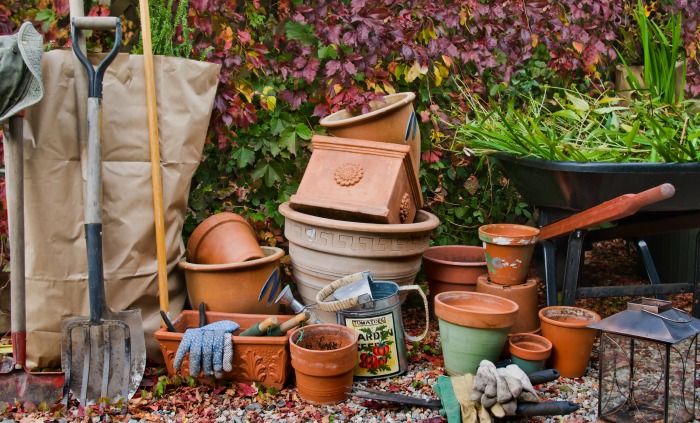 It’s that time of year again! The crisp cool weather and changing leaves are upon us. Fall is here! It’s time to break out the pumpkin spice lattes and the warm cozy socks. But it’s also time to prepare your garden so it’ll be ready for planting in the spring.
It’s that time of year again! The crisp cool weather and changing leaves are upon us. Fall is here! It’s time to break out the pumpkin spice lattes and the warm cozy socks. But it’s also time to prepare your garden so it’ll be ready for planting in the spring.
The changing of the seasons is often bittersweet for nature lovers and gardeners. One the one hand, you’ll miss your homegrown produce but on the other hand, warm sweaters and cozy nights by the fire await. It’s all a part of the cycle of Earth, and we’ve put together this guide to help you get your garden winter ready so you can enjoy the planting season in the coming spring. Taking the extra time to clean up your vegetable garden in the fall makes spring planting a lot quicker and easier; not to mention more enjoyable!
Step 1:
The first step is to clean up the garden beds. Here’s a handy To-Do List for the Fall. If you do this before it gets too cold, you’ll be more comfortable as well. It also helps to remember with gratitude what your garden has given you over the summer. It makes the motivation to care for your garden so much easier. A vegetable garden is usually such a complete mess by the end of the season that it can seem overwhelming at first. So, break up the cleanup tasks over the course of a few weeks and work through the garden one bed or area at a time until they are all cleaned up and tucked in for winter. Remove all the dead and dying plants because some diseases, including “Late Blight” (the fungal disease responsible for the Irish potato famine) and pests can overwinter on foliage and fruit left in the garden. Remember to pull any weeds too in preparation for what comes next.
Step 2:
The next step is to add a 1-2 inch layer of compost or mulch to your vegetable garden. Lightly cover the beds with the old mulch to help suppress weeds and protect the soil without insulating the beds. Remember; all diseases and pests in the soil are killed when it freezes over in the winter. Mulching the beds too thickly could prevent the soil from freezing completely. Once the ground freezes, add another layer of mulch to perennial herbs and flowers. During the winter, the snow can actually help the garden such as insulate plants from the cold, slowly release nutrients and increase activity in some microorganisms found in the soil.
Step 3:
Consider getting a soil test once you’ve cleaned the garden and mulched. A soil test will help you to determine if your soil will benefit from amendments to add nutrients and adjust pH. Soil tests results will tell you:
- Soil pH
- Levels of potassium (K), phosphorus (P), calcium (Ca), magnesium (Mg), and sulfur (S)
- Level of organic matter
- Lead content
A soil test will recommend how much lime and fertilizer (organic or chemical) to add to it improve the quality. Lime is commonly used to adjust the soil’s pH. Adding lime in the fall is beneficial because it has all winter to dissolve into the soil.
Step 4:
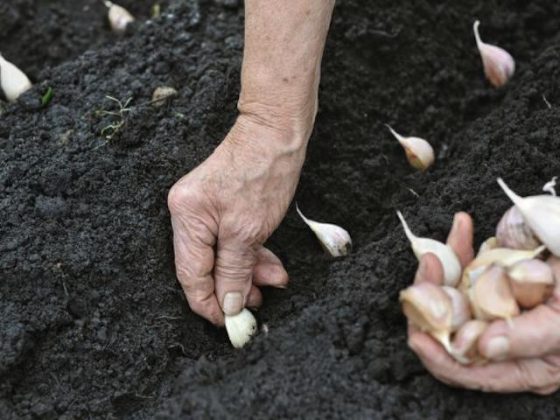
Now is the time to plant next year’s garlic! Garlic roots develop in the fall and winter, and by early spring they can support the rapid leaf growth that is necessary to form large bulbs. Ensure soil is well-drained with plenty of organic matter. Select a sunny spot with a sandy, clay loam if possible. In heavier soil, plant the garlic in raised beds that are two to three feet wide and at least 10 to 12 inches tall. In areas that get a hard frost, plant garlic as early as 6 to 8 weeks before the first expected fall frost date.
As you are preparing your vegetable garden for the change in seasons, think about what you grew and how it did. Take notes on how many plants you grew, which varieties did well, and how much you harvested. You could also consider which pests you had to deal with and on which plants. This will help you come spring time when deciding which vegetables are right for you and what you can grow well or need some extra work on.
Step 5:
The last step is to enjoy the fall season! Enjoy the changing leaves and beautiful colors of the season knowing your garden is tucked in for the winter and you’ll be ready to get going once things warm up again in the spring! All you’ll have to do is rake the mulch aside and begin putting seeds or starts in the soil! Enjoy the fruits of your garden over the winter so you look forward to growing more delicious food once again.
Vegetable Gardening and Growing Tips
http://www.thesurvivalistblog.net/wp-content/uploads/2014/11/Build-a-greenhouse.pdf
http://www.thelostways.com/vsl/index.php?hop=marine20&split=5001
Unhttp://www.standeyo.com/